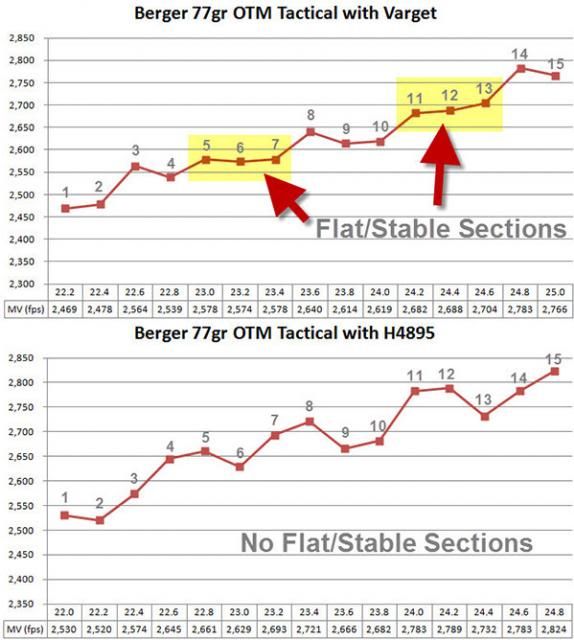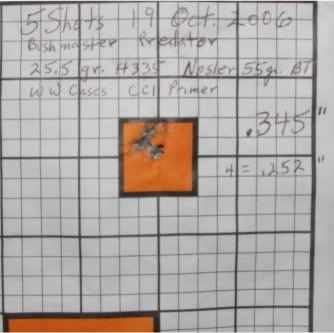So I've read various links and posts about ladder testing here on PM and decided to give it a try. Now I'm not sure what the results are telling me. Rifle is Savage M12 14 twist with no mods at all. I used Win brass and primers, Varget from 31.0--36.0 gr by 0.5 gr increment and 55 gr NBT, 2 shots per charge weight. Shot at 280 yds. The day was pretty warm and the mirage was pretty bad, though I let the barrel cool after each pair at each charge weight. Also I have little experience shooting at this distance.
I think I see close vertical separation in the 31.0-32.0 range and also in the 34.0-35.0 range, right? Is this what I'm looking for? Should I now load some more in one of those ranges and play with seating depth? Or something else? The one 31.5 gr round that landed high and left is probably my bad shooting. I don't have access to long range so had to make do the best I could in a farmer's field using a folding table. Actually I thought the horizontal spread was pretty interesting too as I could see my heart beat causing the reticle to slide back and forth across the mark. But if I understood the articles I read correctly, it is the vertical separation that matters anyway.

I think I see close vertical separation in the 31.0-32.0 range and also in the 34.0-35.0 range, right? Is this what I'm looking for? Should I now load some more in one of those ranges and play with seating depth? Or something else? The one 31.5 gr round that landed high and left is probably my bad shooting. I don't have access to long range so had to make do the best I could in a farmer's field using a folding table. Actually I thought the horizontal spread was pretty interesting too as I could see my heart beat causing the reticle to slide back and forth across the mark. But if I understood the articles I read correctly, it is the vertical separation that matters anyway.

Last edited:








